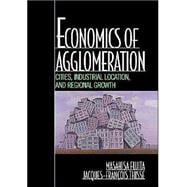
What is included with this book?
| Acknowledgments | xi | ||||
|
1 | (24) | |||
|
1 | (2) | |||
|
3 | (2) | |||
|
5 | (6) | |||
|
11 | (4) | |||
|
15 | (10) | |||
| PART I. FUNDAMENTALS OF GEOGRAPHICAL ECONOMICS | |||||
|
25 | (37) | |||
|
25 | (3) | |||
|
28 | (2) | |||
|
30 | (17) | |||
|
47 | (2) | |||
|
49 | (7) | |||
|
56 | (6) | |||
|
62 | (31) | |||
|
62 | (3) | |||
|
65 | (13) | |||
|
78 | (12) | |||
|
90 | (3) | |||
|
93 | (40) | |||
|
93 | (5) | |||
|
98 | (8) | |||
|
106 | (9) | |||
|
115 | (4) | |||
|
119 | (9) | |||
|
128 | (5) | |||
|
133 | (36) | |||
|
133 | (3) | |||
|
136 | (13) | |||
|
149 | (10) | |||
|
159 | (10) | |||
|
160 | (9) | |||
| PART II. THE STRUCTURE OF METROPOLITAN AREAS | |||||
|
169 | (48) | |||
|
169 | (5) | |||
|
174 | (11) | |||
|
185 | (6) | |||
|
191 | (10) | |||
|
201 | (8) | |||
|
209 | (1) | |||
|
210 | (7) | |||
|
211 | (6) | |||
|
217 | (50) | |||
|
217 | (4) | |||
|
221 | (11) | |||
|
232 | (11) | |||
|
243 | (5) | |||
|
248 | (10) | |||
|
258 | (9) | |||
|
259 | (8) | |||
| PART III. FACTOR MOBILITY AND INDUSTRIAL LOCATION | |||||
|
267 | (36) | |||
|
267 | (3) | |||
|
270 | (8) | |||
|
278 | (8) | |||
|
286 | (12) | |||
|
298 | (5) | |||
|
299 | (4) | |||
|
303 | (48) | |||
|
303 | (4) | |||
|
307 | (14) | |||
|
321 | (6) | |||
|
327 | (11) | |||
|
338 | (5) | |||
|
343 | (8) | |||
|
345 | (6) | |||
| PART IV. URBAN SYSTEMS AND REGIONAL GROWTH | |||||
|
351 | (37) | |||
|
351 | (4) | |||
|
355 | (10) | |||
|
365 | (14) | |||
|
379 | (5) | |||
|
384 | (4) | |||
|
386 | (2) | |||
|
388 | (45) | |||
|
388 | (4) | |||
|
392 | (9) | |||
|
401 | (11) | |||
|
412 | (9) | |||
|
421 | (12) | |||
|
422 | (11) | |||
| References | 433 | (20) | |||
| Name Index | 453 | (6) | |||
| Subject Index | 459 |
The New copy of this book will include any supplemental materials advertised. Please check the title of the book to determine if it should include any access cards, study guides, lab manuals, CDs, etc.
The Used, Rental and eBook copies of this book are not guaranteed to include any supplemental materials. Typically, only the book itself is included. This is true even if the title states it includes any access cards, study guides, lab manuals, CDs, etc.